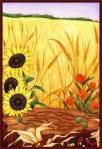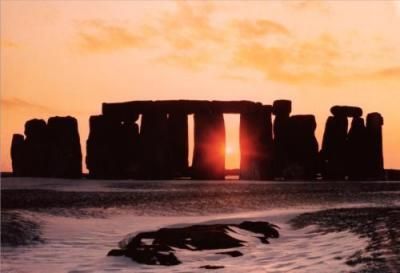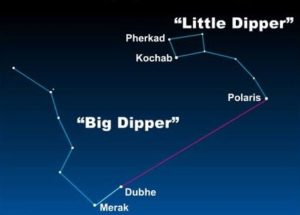Winter Solstice was special this year. The Northern Hemisphere’s shortest day and longest night was graced with a full moon and meteor showers. The final and thirteenth full moon of 2018 occurred at 12:29 PM ET. Tonight the moon rose at 4:47 PM ET and sets tomorrow morning at 6:55 AM ET. The last time …
Tag: Full Moon
Feb 10 2017
Full Moon, Lunar Eclipse and a Comet
There a full moon tonight, the Snow Moon, appropriately, for those of us In The Northeast.. Nothing unusual about that except that there is also a lunar eclipse and a comet Turn this evening into a cosmic experience — a full moon, lunar eclipse and the chance to see a pale green comet as it streaks …
Nov 13 2016
November’s Beaver Moon Is Super
Tonight’s full moon will be at its closest to the Earth since 1948, making it appear larger and brighter than usual. The moon will appear around 14 percent bigger and 30 percent brighter compared with the smallest full moons. It will be worth taking a step outside to see this super supermoon. What is a …
Aug 31 2012
Blue Moon Lights Tonight’s Sky
Tonight’s Blue Moon is special since there will not be another until 2015.
The moon will wax to its full phase at 9:58 a.m. EDT (1358 GMT) today, bringing August’s full moon count to two (the first one occurred Aug. 1). Two full moons won’t rise in a single month again until July 2015. [..]
Tonight’s blue moon also happens to fall on the day of late astronaut Neil Armstrong’s memorial service. Armstrong, who on July 20, 1969 became the first person to set foot on the moon, died Aug. 25 following complications from heart surgery.
So stargazers may want to keep Armstrong’s “one small step” in mind as they gaze up tonight.
“For those who may ask what they can do to honor Neil, we have a simple request,” Armstrong’s family wrote in a statement shortly after his death. “Honor his example of service, accomplishment and modesty, and the next time you walk outside on a clear night and see the moon smiling down at you, think of Neil Armstrong and give him a wink.”
So if your sky’s are clear tonight, even if they’re not, go outside, reach up with your arms towards the moon and breath.
Aug 02 2012
Full Moon, Blue Moon, Lughnasadh
August is here and tonight we a graced with the first of two full moons and the first harvest festival of the Wiccan year, Lughnasadh.
August 31 will be the last Blue Moon, the second full moon in a single month, until July 2015. A “blue moon’ occurs approximately every 2.7 years. On rare occasions, as in 1999, it happens twice. Joe Rao at Space.com explains the term “blue moon” its origins and some interesting astronomical lunar trivia:
The phrase “once in a blue moon” was first noted in 1824 and refers to occurrences that are uncommon, though not truly rare. Yet, to have two full moons in the same month is not as uncommon as one might think. In fact, it occurs, on average, about every 2.66 years. And in the year 1999, it occurred twice in a span of just three months.
For the longest time no one seemed to have a clue as to where the “blue moon rule” originated.
It was not until that “double blue moon year” of 1999 that the origin of the calendrical term “blue moon” was at long last discovered. It was during the time frame from 1932 through 1957 that the Maine Farmers’ Almanac suggested that if one of the four seasons (winter, spring, summer or fall) contained four full moons instead of the usual three, that the third full moon should be called a blue moon.
But thanks to a couple of misinterpretations of this cryptic definition, first by a writer in a 1946 issue of Sky & Telescope magazine, and much later, in 1980 in a syndicated radio program, it now appears that the second full moon in a month is the one that’s now popularly accepted as the definition of a blue moon.
Blue Moon/New Moon
While we’ve assigned the name blue moon to the second full moon of the month, it seems that we have no such name for the second new moon of the month. Nonetheless, these opposing phases seem to be connected with each other. For if two new moons occur within a specific month, then in most cases, four years later, two full moons will also occur in that very same month.
Tonight the moon becomes full at 11:27 PM EDT and st 9:58 AM on August 31. The moons also have names that originated from our Native American brothers and sisters:
Aug. 1, Full Sturgeon Moon, when this large fish of the Great Lakes and other major bodies of water, such as Lake Champlain, is most readily caught. A few tribes knew this moon as the Full Red Moon because when the moon rises, it appears reddish through sultry haze (in 2012, The Old Farmer’s Almanac gives this moniker to the full moon of Aug. 31). Other variations include the Green Corn Moon or Grain Moon.
Aug. 31, Full Corn Moon. Sometimes also called the Fruit Moon; such monikers were used for a full moon that occurs during the first week of September, so as to keep the Harvest Moon from coming too early in the calendar.
 The first two days of August are also the Wiccan holiday of Lughnasadh,or Lammas, the first of three harvest festivals celebrating the bounties of Mother Earth. The name is derived from the Irish god, Lugh, who dedicated the festival to his foster mother who died clearing a forest for planting. It marks the beginning of the harvest when apples are ripe, wheat and corn are ready to harvest. Herbs and flowers are ready to be picked and dried and fruit are prepared for preserving, seeds are gathered for Spring planting. To celebrate, a fire is lit and the table is spread with the bounties of the harvest and decorated with seasonal flowers. The first wines and beers are placed in pitchers and dinner is grilled meat and vegetables from the garden seasoned with fresh herbs.
The first two days of August are also the Wiccan holiday of Lughnasadh,or Lammas, the first of three harvest festivals celebrating the bounties of Mother Earth. The name is derived from the Irish god, Lugh, who dedicated the festival to his foster mother who died clearing a forest for planting. It marks the beginning of the harvest when apples are ripe, wheat and corn are ready to harvest. Herbs and flowers are ready to be picked and dried and fruit are prepared for preserving, seeds are gathered for Spring planting. To celebrate, a fire is lit and the table is spread with the bounties of the harvest and decorated with seasonal flowers. The first wines and beers are placed in pitchers and dinner is grilled meat and vegetables from the garden seasoned with fresh herbs.
It’s raining here tonight, so our celebration will be postponed until tomorrow night. We are hoping for a glimpse of the moon as the storms move out of the area tonight.
May 05 2012
The Super Moon Of May
It’s time to stand still a moment, look up, and breathe. Saturday night at 11:34 PM EDT the moon will reach its perigee, its closest point to Earth in its elliptical orbit and one minute later it become full. According to NASA, 14 percent bigger and 30 percent brighter than the other full moons of 2012.
Saturday also marks the midpoint of spring in the Northern Hemisphere. The exact moment between the March equinox and the June solstice occurs at 10:11 a.m. EDT May 5.
High tide will be higher and low tide will be lower. The only worry there is if Manhattan slides away into the Atlantic but Long Island would have to go first.
But whatever you’re doing, take time to go out side, stand still a moment to look up at the night sky and breathe.
Mar 19 2011
Stand Still a Moment: Look Up, Breathe
 Since the Winter Solstice, it seems like we have been moved from one crisis to the next without no respite, many of these events overlapping the others, each one exponentially worse. Time to stop for a night and look up at the sky and breath. Tomorrow the moon will not only be full, it will be the closest it has been to Earth in 18 years, a Supermoon. Many astrologers believe it can trigger natural disasters but in actuality, it has little to no effect. The moon may effect the ocean’s tides but it is not capable of triggering devastating earthquakes or volcanic eruptions.
Since the Winter Solstice, it seems like we have been moved from one crisis to the next without no respite, many of these events overlapping the others, each one exponentially worse. Time to stop for a night and look up at the sky and breath. Tomorrow the moon will not only be full, it will be the closest it has been to Earth in 18 years, a Supermoon. Many astrologers believe it can trigger natural disasters but in actuality, it has little to no effect. The moon may effect the ocean’s tides but it is not capable of triggering devastating earthquakes or volcanic eruptions.
Native Americans have several names for March’s full moon:
As the temperature begins to warm and the ground begins to thaw, earthworm casts appear, heralding the return of the robins. The more northern tribes knew this Moon as the Full Crow Moon, when the cawing of crows signaled the end of winter; or the Full Crust Moon, because the snow cover becomes crusted from thawing by day and freezing at night.
This Supermoon is doubly special as it occurs on the last night of this long, cold snowy winter. Sunday is the Spring equinox when the night and day are equal and the earth is in balance. In mythology it is the time, that Persephone, the Greek goddess of spring, starts Her journey back to Earth and Her beloved mother, Demeter. Each year at the end of the winter season, She returns to the surface of the earth for a joyful reunion with Her mother. In winter, She returns to live in the Underworld as the Queen of Hades. Persephone is the goddess of death, yet with a promise of life to come. For Pagans, it is one of the eight important festivals in the Wheel of the Year.
We cannot control the Earth or slow the Wheel, we can take time to go out side, stand still a moment to look up at the night sky and breathe.
Dec 21 2010
Winter Solstice

The Winter Solstice arrives December 21 at 1838 hours, The Moon will be bright and full having passed though a full eclipse in the waning hours of Autumn here on the East Coast of North America. An event that last occurred in 1638, 372 years ago.
The Winter Solstice is a special night for those who practice the craft. In old Europe, it was known as Yule, from the Norse, Jul, meaning wheel. It is one of the eight holidays, or Sabbats, that are held sacred by Wiccans and Pagans around the world. It the longest night of the year, mid-winter. We decorate our homes with red, green and white, holly, ivy, evergreen and pine cones. We honor the solar year with light. There is food roasts and stews and winter vegetables and sweets, chocolate and peppermint candy, apples and oranges and sweet breads. Of course there will be wine and beers, some made by friends who will join the festivities.
This year we will have two nights of celebration, the night of the eclipse, we’ll gather around the fire in the early morning hours and marvel at the orange glowing moon, drinking hot cocoa and hot buttered rum. We’ll sing and dance and laugh away the darkness and cold. Tomorrow we’ll finish cooking the food for the feast to celebrate the passing of another years and the coming of Spring and rebirth. The fire started the night before will have been kept burning and again we will join together with family and friends, remembering the old year and planning for the new one coming as the day begin to lengthen.
Merry Yule, everyone.


Recent Comments